|
My bees survived the winter, luckily! I had wrapped them in sheets of thick styrofoam and geotextile and made sure they were full of honey and pollen so they had enough food for the winter. I guess it paid off, since both hives were fairly strong as spring emerged. I started with two hives, and I had named them based on their collective temperament - Rose is the one on the left since it's a stronger colony and also a bit more aggressive. Daphne is on the right since the queen is less productive, so there are less bees, and they're more docile. Rose was the only one that produced enough honey last year for me to harvest (Daphne was a little slow getting off the ground), so I was expecting that it would continue to be pretty productive this year. When I say "productive", I mean that the queen lays a lot of eggs, so there are more worker bees, which means more worker bees make more honey. If I was keeping hives to make money or to have all of the honey I could possibly use, I would replace my less productive hive with a new queen so that I could harvest honey from both hives. But my nerdy biology goal is to raise bees that are adapted to my area, by splitting the strong hives as they grow and letting them make their own queen instead of continuously buying queens from a breeder, as most people do. It's a bit more risky to let the bees make their own queen, since then it needs to mate with males in the area (instead of coming inseminated already, as is when you buy them from a breeder), and it can get killed when it leaves the hive for this mating mission. 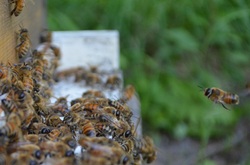 So over the weekend, I built a third hive. I'm not very mechanically minded so this actually took me a few hours to hammer all of the pieces together and paint them. Once it was all set up and the linseed oil I used was dry (I use linseed oil because it's less toxic than paint), I transferred a few frames from the strong hive into the new hive. Usually people put four or five frames from the old hive into the new hive, and those frames need to include honey (to give the new colony extra food if they need it), capped brood and eggs (developing worker bees so the population is continually replenished), adult worker bees, and a new queen cell. By chance, I found that the bees had been growing a new queen in a queen cell for their strong hive, which is a sign that they would have swarmed. Swarming is when the hive is too full or small for everyone, so the queen and a cluster of worker bees take off to start a new home, leaving more room for the new queen and rest of the workers. Once I put five frames from the Rose hive into the new hive (still trying to figure out a name for the new one), I added empty frames to make sure the hive was full, then I closed the lid. This is my first time splitting a colony, so I kind of saw it as an experiment - we'll see if it works!
0 Comments
 My two new hives! About two weeks ago, I got two new bee colonies! Last year, I had a beehive at the Macdonald Campus with their McGill Apicultural Association. But in winter, I realized that they had died from colony collapse disorder. When I opened the hive, there were only about five dead bees, and lots of honey and brood left. They seemed to have just...disappeared. It was extremely weird and characteristic of colony collapse disorder, so I started reading a lot of scientific papers. I'm still working on a literature review, but personally, I think the science is pretty clear: corn coated in pesticides are poisoning bees at sublethal levels, weakening their immune system. This article in the New York Times sums up two scientific studies that were released at the end of March: http://www.nytimes.com/2012/03/30/science/neocotinoid-pesticides-play-a-role-in-bees-decline-2-studies-find.html When I stared into my dead hive in late January, I felt angry. I felt determined. I was going to help change this. I was pretty torn in the spring. I wanted to move my hive to somewhere without pesticides, but I thought that I wouldn't have as much say in the bee club, since I would no longer have a hive there. I wouldn't really be a stakeholder anymore. So I've continued to work on the literature review, and it is somehow taking me forever to complete. But I'm getting there. And I moved my bees to the cottage. The cottage! My parents have given me half the field (I am now a landowner! Well...unofficially.), so that's where my garden, an old apple tree, a meadow, and now my bees live. I love my garden, but the poor thing is so neglected since I can only go once every two weeks. Bees, luckily, only need to be visited once every two weeks. So far the two hives are doing well. It's interesting to have two this year instead of one, so that I can compare which one is doing better. I'm not sure if they like me yet, but I love them.
I feel like I love my bees more every time I visit them. No longer are they furious, terrifying insects two stings away from possibly sending me into anaphalactic shock. Now, I see them as totally engrossing, amazing, and ecosystem-important girls (since all the workers are female). It's super cool to see how much the hive has reproduced every time I visit. It seems that all of my 6 new frames have started to be built on.
Instead of me rambling on about how much I love my bees, I'll just show you some pictures. Maybe you'll be convinced of how awesome they are. It's been about a month since I've had my beehive, so I think it's time for an update. Putting the hive together and adding the workers, drones, and queen went off without any problems. Now comes the scariest part: actually opening my beehive. I've been advised to check on my beehive every two weeks, so by now I've checked on them three times. I was really nervous the first time I opened my hive. I've still never been stung, so I don't know if I'm deathly allergic or not. Apparently the odds of actually being deathly allergic are extremely low (I've heard estimates that about 1% of the population). But I would like not to find out the hard way that I am in that select 1%. So, I was incredibly nervous the first time because: 1) I had no idea what I was doing, even though I had watched hives being opened by various people at the apiary, and 2) I didn't want to get stung and die Since I'm still writing this blog, clearly option 2 didn't happen. The first time I opened the hive a month ago, I noticed that the bees hadn't built up the honeycomb to the plastic frames. My hive was started with 4 wooden frames from another beekeeper who was generous to spare me some of his workers. Those established frames have always been doing well, but it has taken about a month for the bees to start building on the new frames. At first I was told that it was because I didn't wax the plastic frames, so I spent an evening melting old wax and painting it on my 20 plastic frames. But to be honest, the fact that bees were on the old frames but not the new ones was about ALL I noticed on my first visit. As quietly and calmly as I could muster, I opened up the top of the hive, peeked in, lifted up one of the new plastic frames, and noticed there was a bee buzzing somewhat angrily in front of my face. I studied wildlife biology, but I think anyone could figure out that that bee was saying "GET OUTTA HERE, LADY!" So I put everything back, closed the hive, and got outta there. I also forgot to mention that I had neglected to buy plastic gloves and a water spray bottle, so the risk of being stung was higher than normal. The water bottle is good to mist the top of the frames so the bees think it's raining and retreat deeper into the hive, making it easier to pick up the frames. I realized after my first visit that I couldn't live in perpetual fear of dying from two bee stings. At my next doctor's visit, I asked for a perscription for an epipen just in case. The doctor seemed very intruiged and confused about why I would choose to raise bees, and I think spent more time talking to me about bees than the condition that I actually came to the doctor for. He also warned me that epipens are expensive. Multiple people have told me this, as if finding out that paying $50 for a potentially life-saving device would be a deal-breaker. If nothing else, it was worth the peace of mind. On my second visit, I was slightly less nervous because I had brought gloves and an epipen, but I was still deterred by a solitary angry bee in my face. I did manage to pull out one of the wooden frames to make sure the bees were making honey and brood (baby bees). These are two of the main things you should look for when you're checking your bees, since this means that the workeres are doing okay, and queen is alive and making young. There are ways to check for parasites and diseases in the hive, but I'm not that experienced yet. I was nowhere near being comfortable poking around the hive, and I wanted to check on the bare minimum and get the hell out of there. 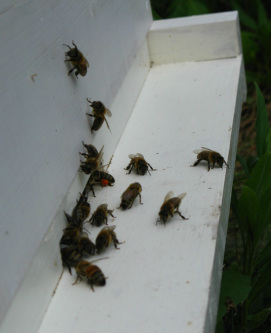 My two week mark was coming up again yesterday, so I was dreading/looking forward to check on the hive again. I took out Beekeeping for Dummies from the library, which is a really great book. I keep it (until I have to return it) in a tote bag with my camera, epipen, gloves, and lab coat. I felt more prepared this time. Since I had a little extra time, I spent about 15 minutes sitting to the side of my hive entrance, watching them. I know it's important to be calm when you check on the hive, so I was hoping that a little observation time would help me zen out. It's pretty fascinating to watch the bees dance and fly in and out of the entrance. You can see a bee heading into the hive with some pollen on its legs. When I felt sufficiently relaxed, I opened up the hive. Last time, the bees hadn't built comb on the plastic frames, but instead on the inner cover and other places that they weren't "supposed" to. I was happy to find out that there was only a little bit of comb on the inner cover, and they were actually starting to build on two of the plastic frames. (Although, not the ones I waxed, curiously enough). Success! I also felt comfortable enough to lift out the wooden frames and inspect them. I was so engrossed that I realized about halfway through that I was holding a frame of about 100 bees about a foot from my face. I think my calmness worked though, since the bees didn't seem to mind. I tilted the frames around to see that eggs had been laid, and I could see larvae at the bottom of the some of the comb. I even saw the queen on one of the frames! She's larger and longer than the workers, and is marked with a spec of white from the breeder. I was pretty happy with myself that I was finally comfortable enough to be able to spot these things. I really feel like a beekeeper now, not just a person who nervously opens up a box full of bees.
For the past few months, I've been preparing to get a beehive. I got the idea suddenly when I was on a train to Toronto: why don't I start a beehive at the cottage? I had already heard a lot about colony collapse disorder, and the mystery of why bees were dying off. On my self sufficiency kick this summer, I thought that getting some honey bees would be a good way to help the population, and make me a little honey on the side. Plus, I think anyone who has read even a little bit about honey bees finds them facinating, with their social structure and dancing. I had a hard time figuring out how to get started, but I read a few books about beekeeping for absolute beginners and tried to talk to a lot of people about it. Turns out, I had two friends and a coworker who also had bees. I realized that instead of starting one at the cottage, where I would be completely isolated and not have anyone to ask for help, I could join the McGill Community Apiary. There are communal supplies (like the mesh hats, smoker, and tools), and it's great to have a community of people to answer my questions (like..."uhh...so what do I do with these bees when I get them?"). My first step was to order the pieces of the hive. I knew I needed a series of boxes and other various wooden things, but it was Branislav, who founded the McGill Apiary a few years ago, who gave me a list of the essential parts that I needed for a Langstroth hive (the most common type). About a few weeks ago, my materials arrived from Propolis-Etc, a beekeeping supplies company in Quebec. You can buy parts of the hive already assembled and painted, but I chose to save some money by D.I.mYself. My hive costs about $170 (taxes included) for the bottom board, two medium supers (where the bees live and make honey), a feeder for the fall/spring, 20 plastic frames for the bees to make combs over (10 per super), an inner cover, an entrance reducer, and an outer cover.  Hive all assembled and painted. I'm not very handy, so I enlisted the help of a new friend to help put it together and paint. From what I've read, it's not a huge amount of work to maintain a beehive, but they do need to be checked on every 2 weeks or so, and preparations need to be made in the fall and spring. Therefore, it's helpful to have 2 people share the work of a hive and split the honey at the end (especially when that friend lives within 5 minutes from the hive, instead of 45 minutes like myself). Next part: the bees! I had never even been near a beehive in real life until the day I put mine together. I started second guessing myeslf when I showed up the apiary and realized that I was 2 feet away from someone else's buzzing, very active hive with hundreds of scary bees. Would my hammering and talking anger them, forcing them to turn on me in a massive swarm? Nope. I could sit off to the side of a hive and watch them go in and out without them really caring. They do sting, but it seems like it's most likely when you're standing in their flight path...so stay away from the front entrance! Once I realized that the bees didn't really care that I was there, I felt more comfortable about what I had just gotten myself into. Over the weekend, Branislav took 4 frames of someone else's hive and put them in my own. The workers were happy to stay in their shiney new hive for a few days without a queen. Then, a queen and a few drones in a little plastic cage were put into my new hive. There is a bunch of sugar plugging the exit of the cage, so within a few days, they eat their way out of the container. By that time, the workers have accepted their new queen. Within a few days, you have to check to make sure the queen is still there (she's marked with a little white dot, which makes it a heck of a lot easier to distinguish a slightly larger bee from hundreds of others). I checked on my hive on Monday, and am pleased to report that it seems to be going well! I didn't realize that I had to paint the plastic frames with wax because usually the bees won't start putting eggs or honey there without that foundation. So my project today is to melt some leftover beeswax from the apiary and paint it onto my plastic frames. I had kind of gotten into beekeeping because it sounded interesting and I thought it would be good to help out the overall honey bee population. I did not expect the feeling of wonder and love when I sat next to my complete beehive and watched the worker bees dance their heart out at the entrance of the hive. And if you don't think bees are cool yet, watch this video: |
About ShonaI'm an eco-conscious girl from Montreal, Quebec. I'm currently an adjunct science professor at Champlain College of Vermont (Montreal Campus). I'm interested in any opportunities to expand my experience with grassroots activism, climate change legislation, or environmental education. Archives
March 2016
Categories
All
|
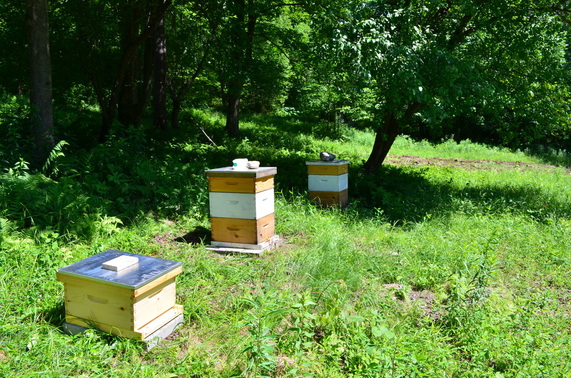








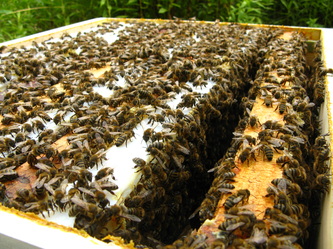



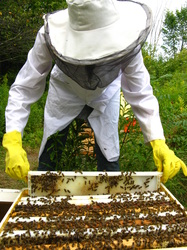

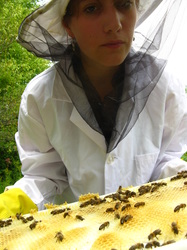



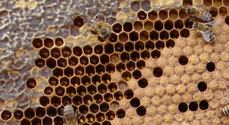

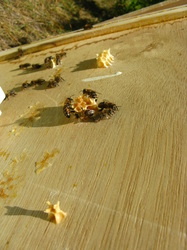
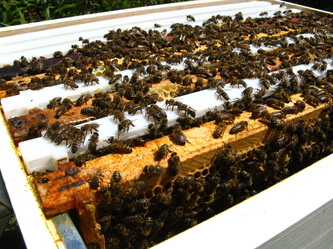
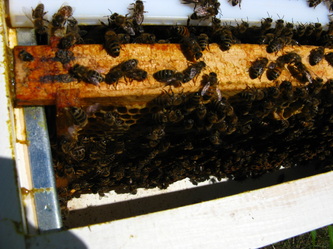
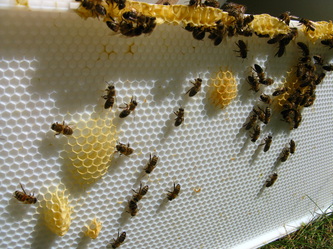


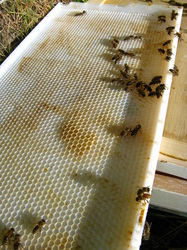



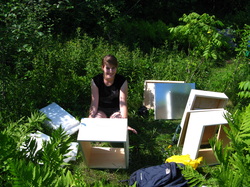


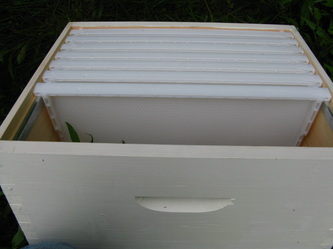


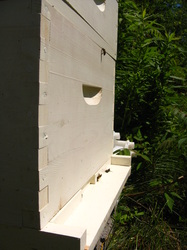
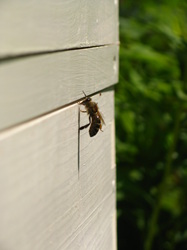
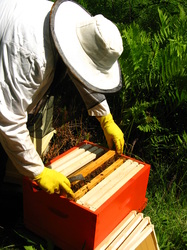
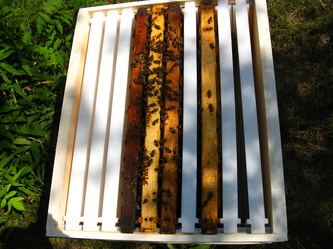


 RSS Feed
RSS Feed
